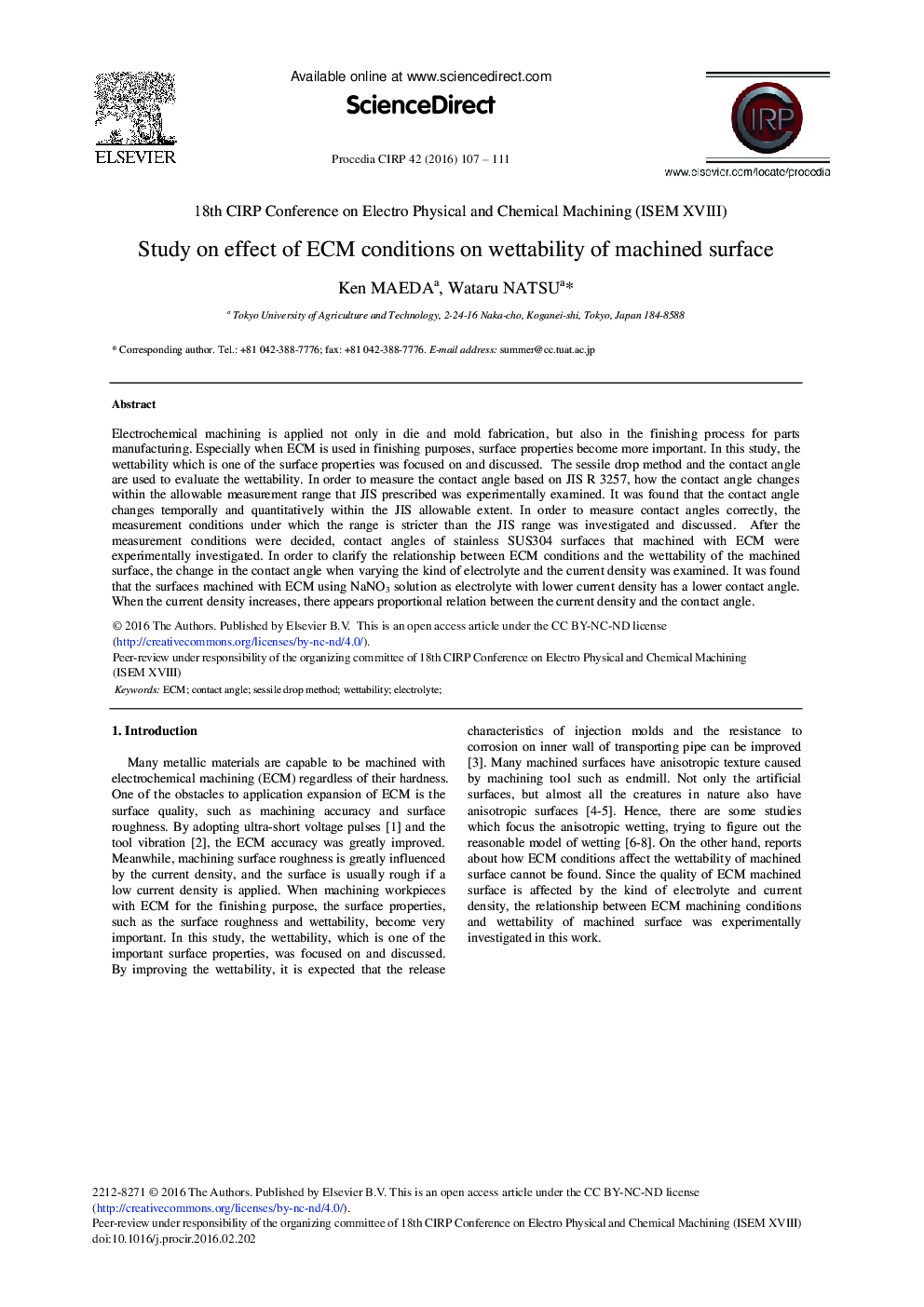| Article ID | Journal | Published Year | Pages | File Type |
|---|---|---|---|---|
| 1698921 | Procedia CIRP | 2016 | 5 Pages |
Electrochemical machining is applied not only in die and mold fabrication, but also in the finishing process for parts manufacturing. Especially when ECM is used in finishing purposes, surface properties become more important. In this study, the wettability which is one of the surface properties was focused on and discussed. The sessile drop method and the contact angle are used to evaluate the wettability. In order to measure the contact angle based on JIS R 3257, how the contact angle changes within the allowable measurement range that JIS prescribed was experimentally examined. It was found that the contact angle changes temporally and quantitatively within the JIS allowable extent. In order to measure contact angles correctly, the measurement conditions under which the range is stricter than the JIS range was investigated and discussed. After the measurement conditions were decided, contact angles of stainless SUS304 surfaces that machined with ECM were experimentally investigated. In order to clarify the relationship between ECM conditions and the wettability of the machined surface, the change in the contact angle when varying the kind of electrolyte and the current density was examined. It was found that the surfaces machined with ECM using NaNO3 solution as electrolyte with lower current density has a lower contact angle. When the current density increases, there appears proportional relation between the current density and the contact angle.
